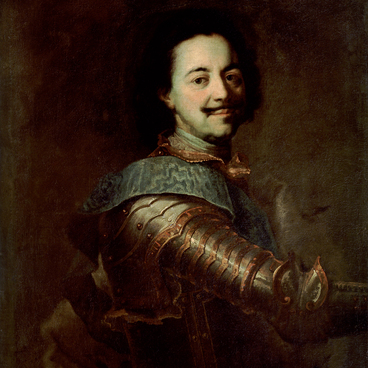The Nativity of Christ is one of the most prominent icons transferred to the Simferopol Museum of Fine Arts from the Tretyakov Art Gallery. The clarity and harmony of the images in the icon suggest that the author belonged to the Moscow school of iconography founded by Andrey Rublev.
One of the most significant pages of history of the Moscow iconography is associated with the name of Andrey Rublev. Prior to him no unified tradition of painting on evangelical subjects had existed. The works of Moscow masters until the 15th century were created in various styles, and often had dramatically different approaches to the interpretation of subjects. Rublev managed to combine the Russian and Byzantine traditions, developed his own icon-painting canon, which became the leading throughout the 15th century.
Andrey Rublev acquired a lot from Theophanes the Grek, with whom he worked for a long time. But the master was alien to the harsh, filled with drama images, created by the Grek, he sought to convey ideals of goodness, beauty and spirituality in his works. He rejected the excessive sophistication of Byzantine forms and archaic techniques, which were traditional for painters of the time. The artistic means of the master served to convey the deep humanity of images and create a subtle poetic feeling among the audience.
In the center of composition of the icon The Nativity of Christ is the Mother of God, dressed in a dark red vestment. Her face is turned away from the Infant. The red bedding matches the figure. The Divine Infant wrapped in white cloth is lying in the manger. A donkey and an ox bowed their heads towards the improvised cradle, the animals warm the Infant with their breath. In the upper left corner are images of three angels singing glory to the Lord, and on the opposite side the artist depicted three riding Wise Men.
The icon has a cyclical space organization - the viewer’s eye moves smoothly to the figure of Joseph in the lower left corner of the icon. Joseph the Betrothed is sitting, deep in thought, and an old scribe is standing in front of him. In the right corner, a female midwife prepares water to wash the Infant. The whole scene is illuminated by the Star of Bethlehem, shining above the cave. Its light, traditionally depicted as three rays, is directed to the center of the composition. The shining luminary seems to show the viewer the way to the Divine Infant.
The master used several colors: green, yellow and white. Combinations thereof make the images more natural. In general, the whole icon is painted with bright colors, which signify the joy, the triumph of the whole visible and invisible world about the birth of the Savior. At the same time the color solution is devoid of excessive sharpness, the tones are somewhat muted and accord with each other.
One of the most significant pages of history of the Moscow iconography is associated with the name of Andrey Rublev. Prior to him no unified tradition of painting on evangelical subjects had existed. The works of Moscow masters until the 15th century were created in various styles, and often had dramatically different approaches to the interpretation of subjects. Rublev managed to combine the Russian and Byzantine traditions, developed his own icon-painting canon, which became the leading throughout the 15th century.
Andrey Rublev acquired a lot from Theophanes the Grek, with whom he worked for a long time. But the master was alien to the harsh, filled with drama images, created by the Grek, he sought to convey ideals of goodness, beauty and spirituality in his works. He rejected the excessive sophistication of Byzantine forms and archaic techniques, which were traditional for painters of the time. The artistic means of the master served to convey the deep humanity of images and create a subtle poetic feeling among the audience.
In the center of composition of the icon The Nativity of Christ is the Mother of God, dressed in a dark red vestment. Her face is turned away from the Infant. The red bedding matches the figure. The Divine Infant wrapped in white cloth is lying in the manger. A donkey and an ox bowed their heads towards the improvised cradle, the animals warm the Infant with their breath. In the upper left corner are images of three angels singing glory to the Lord, and on the opposite side the artist depicted three riding Wise Men.
The icon has a cyclical space organization - the viewer’s eye moves smoothly to the figure of Joseph in the lower left corner of the icon. Joseph the Betrothed is sitting, deep in thought, and an old scribe is standing in front of him. In the right corner, a female midwife prepares water to wash the Infant. The whole scene is illuminated by the Star of Bethlehem, shining above the cave. Its light, traditionally depicted as three rays, is directed to the center of the composition. The shining luminary seems to show the viewer the way to the Divine Infant.
The master used several colors: green, yellow and white. Combinations thereof make the images more natural. In general, the whole icon is painted with bright colors, which signify the joy, the triumph of the whole visible and invisible world about the birth of the Savior. At the same time the color solution is devoid of excessive sharpness, the tones are somewhat muted and accord with each other.
